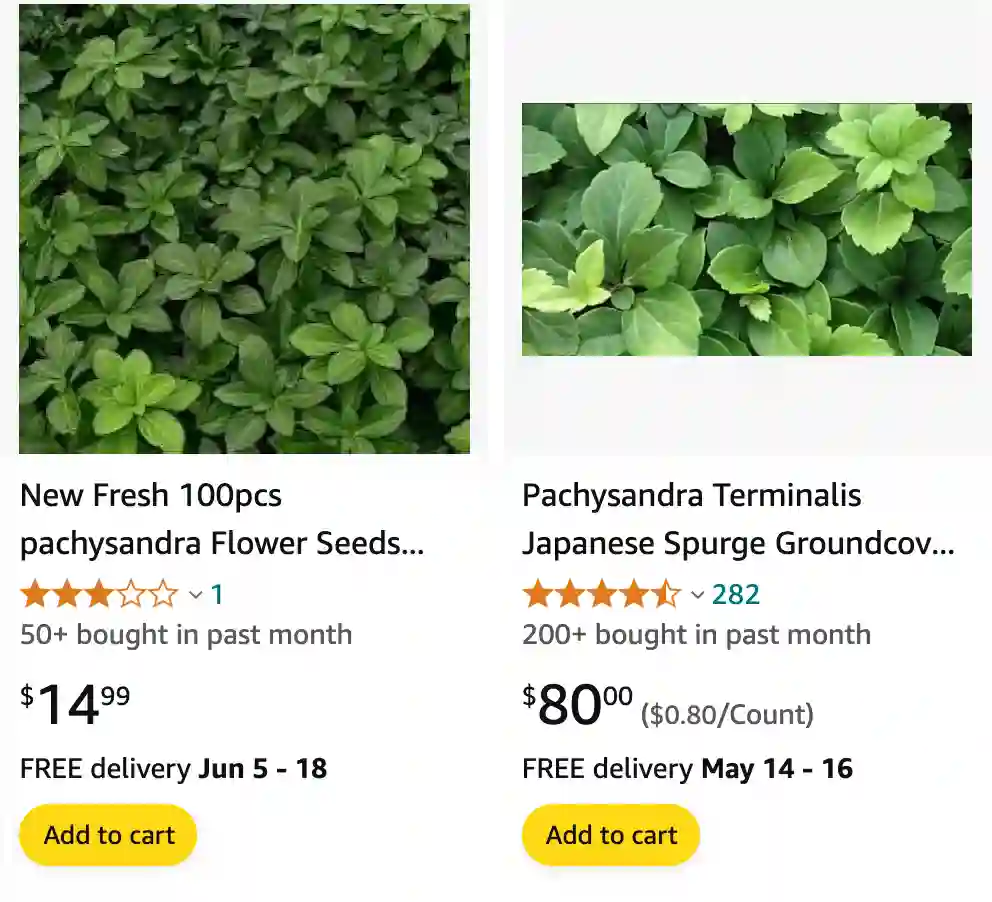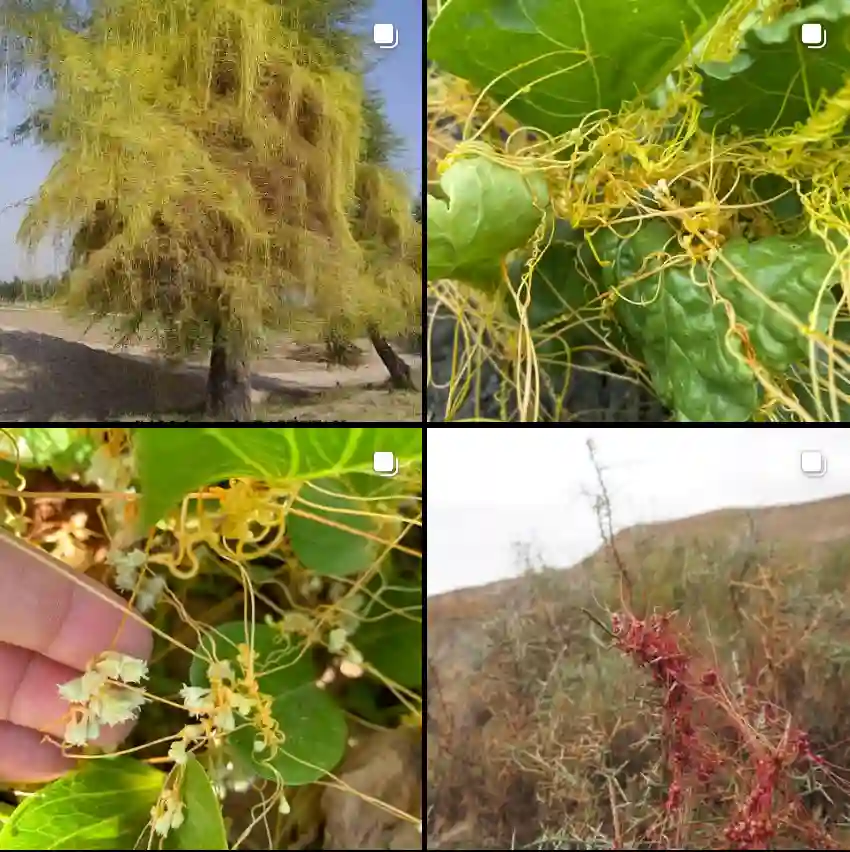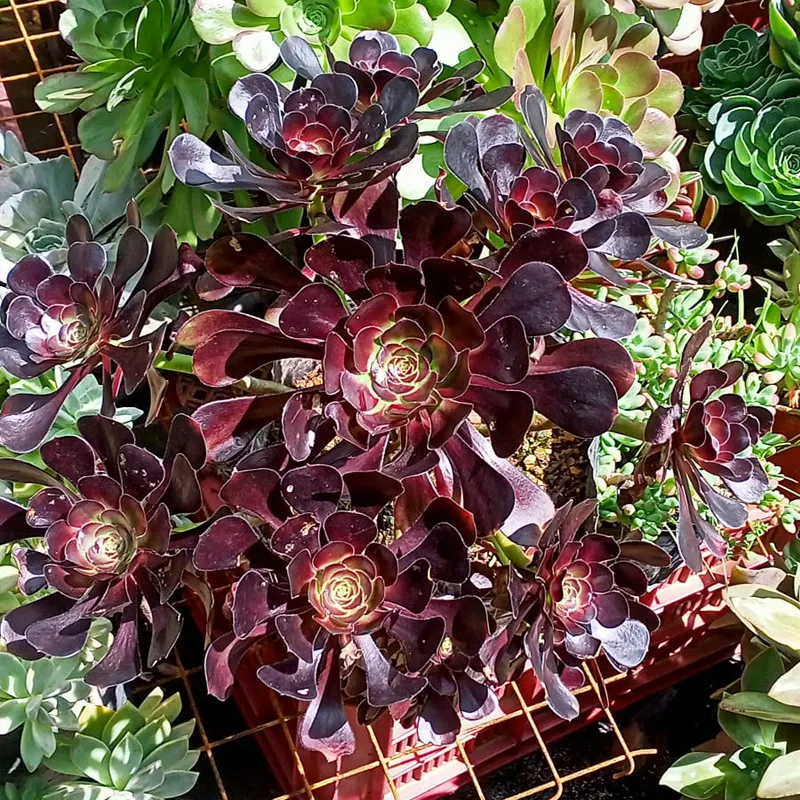
What does pachysandra look like?
Pachysandra belong to the Buxaceae family, is a low-growing evergreen plant with glossy, dark green leaves arranged in a whorled pattern along sturdy stems. Its leaves have a slightly serrated edge, giving them a distinctive look. When it’s in bloom, usually in early spring, it produces small, white flowers that form on spikes above the foliage. The overall appearance is dense and lush, making it a popular choice for ground cover in shady areas of the garden.
Pachysandra species
- Pachysandra axillaris Franch.
- Pachysandra procumbens Michx. Plant FAQs: Pachysandra Procumbens
- Pachysandra terminalis Siebold & Zucc.
How to plant pachysandra?
Planting pachysandra is a straightforward process, but it does require some preparation. First, I like to choose a location with well-drained soil and partial to full shade, as pachysandra thrives in these conditions. Then, I dig a hole slightly larger than the root ball of the plant and place it in the hole, making sure the top of the root ball is level with the soil surface. After planting, I water it thoroughly to help settle the soil and encourage root establishment. Lastly, I apply a layer of mulch to help retain moisture and suppress weed growth.
Is pachysandra invasive?
In my experience, pachysandra can be invasive under the right conditions. Its vigorous growth habit and ability to spread via underground rhizomes make it a potential nuisance in some gardens. To prevent it from becoming invasive, I make sure to keep it contained within defined borders and regularly monitor its growth. If it starts to spread beyond its intended area, I take proactive measures to control it, such as digging up any unwanted shoots or using barriers to limit its spread.
How to get rid of pachysandra?
Getting rid of pachysandra can be a bit challenging due to its tenacious nature and ability to regrow from small root fragments. When I need to remove it, I typically start by digging up as much of the plant as possible, making sure to get as many roots as I can. Then, I carefully monitor the area for any regrowth and promptly remove any new shoots that emerge. For particularly stubborn patches, I may resort to using an herbicide specifically labeled for pachysandra, following the instructions carefully to avoid harming other plants.
How to transplant pachysandra?
Transplanting pachysandra can be done successfully with proper care and attention to timing. I prefer to do it in early spring or fall when the weather is mild and the plant is not actively growing. First, I dig up the entire clump of pachysandra, taking care to minimize damage to the roots. Then, I replant it in its new location, making sure to water it thoroughly and keep the soil consistently moist until it becomes established in its new home.
Do deer eat pachysandra?
In my experience, deer tend to avoid eating pachysandra. Its thick, leathery leaves and bitter taste make it unpalatable to most deer, making it a great choice for landscapes where deer browsing is a concern. However, it’s worth noting that deer preferences can vary depending on factors like food availability and local populations, so it’s always a good idea to monitor the situation and take additional measures if necessary.
When to plant pachysandra?
I’ve found that the best time to plant pachysandra is in early spring or fall when the weather is cooler and the plant is not experiencing the stress of summer heat. Planting during these seasons gives the pachysandra time to establish its roots before the extremes of summer or winter set in, helping it to thrive in its new environment.
Does pachysandra flower?
Pachysandra does produce flowers, but they are not particularly showy. The small, white flowers form on spikes that rise above the foliage in early spring, usually around April or May. While the flowers are not the main attraction of pachysandra, they do add a subtle charm to the plant and can attract pollinators to the garden.
How far apart to plant pachysandra?
When planting pachysandra as ground cover, spacing is important to achieve optimal coverage and a uniform appearance. I typically space pachysandra plants about 6 to 12 inches apart, depending on the desired density of coverage and the size of the plants. Closer spacing results in faster coverage but may require more frequent maintenance to prevent overcrowding.
How much does pachysandra cost?
The cost of pachysandra can vary depending on factors like the size of the plants, the supplier, and the region. In my experience, purchasing pachysandra in larger quantities or as bare-root plants can be more cost-effective than buying individual potted specimens. Local nurseries, garden centers, and online retailers are good places to compare prices and find the best deals.
How to propagate pachysandra?
Propagating pachysandra is relatively easy and can be done through division or stem cuttings. Division involves digging up an established clump of pachysandra and separating it into smaller sections, each with its own roots. These divisions can then be replanted in new locations or shared with other gardeners. Stem cuttings can also be taken from healthy, established plants and rooted in moist soil or water to create new plants.
Is pachysandra deer resistant?
While pachysandra is not completely immune to deer browsing, I’ve found that it is generally considered deer resistant. Its thick, leathery leaves and bitter taste make it less appealing to deer than other plants, making it a good choice for landscapes where deer are a concern. However, it’s important to remember that deer preferences can vary depending on factors like food availability and local populations, so it’s always a good idea to monitor the situation and take additional measures if necessary.
Will vinegar kill pachysandra?
Using vinegar to kill pachysandra is not a recommended method, as it can harm surrounding vegetation and soil. Vinegar is a non-selective herbicide, meaning it can kill or damage any plant it comes into contact with, including desirable plants in the garden. Instead, I prefer to use targeted methods such as hand-pulling, digging, or applying an herbicide specifically labeled for pachysandra, following the instructions carefully to minimize harm to other plants.
How to fertilize pachysandra?
Fertilizing pachysandra can help promote healthy growth and lush foliage. I prefer to use a balanced, slow-release fertilizer formulated for acid-loving plants, as pachysandra prefers slightly acidic soil. In early spring, before new growth begins, I apply the fertilizer according to the package instructions, making sure to water it in thoroughly. Avoid over-fertilizing, as this can lead to excessive growth and potentially harm the plant.
Is pachysandra poisonous to dogs?
In my experience, pachysandra is not considered toxic to dogs. While it’s always a good idea to supervise pets in the garden and avoid planting potentially harmful plants, pachysandra is generally safe for dogs to be around. However, ingesting large quantities of any plant material can potentially cause gastrointestinal upset in pets, so it’s best to discourage them from chewing on or eating pachysandra leaves.
Where to buy pachysandra?
Pachysandra can be purchased from a variety of sources, including local nurseries, garden centers, and online retailers. I recommend buying from reputable sources that offer healthy, well-established plants. When purchasing pachysandra, look for specimens with vibrant foliage and no signs of disease or pests. Consider buying in bulk or larger quantities to get the best value for your money.
If i die, water my plants!



